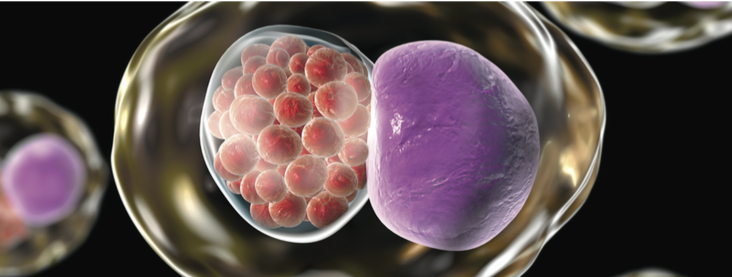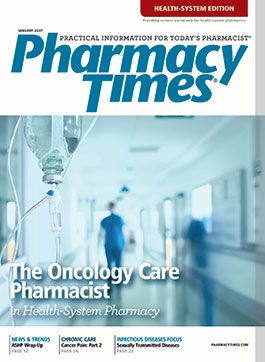The Down and Dirty on Sexually Transmitted Diseases
Sexually transmitted diseases (STDs) can be silent destructors. Patients may be unknowingly spreading infections or afraid to discuss them due to their sensitive nature.

Sexually transmitted diseases (STDs) can be silent destructors. Patients may be unknowingly spreading infections or afraid to discuss them due to their sensitive nature. Left untreated, STDs may lead to the development of serious conditions, including pelvic inflammatory disease, infertility, and ectopic pregnancies. Analyses from 2013 show an incidence of 19 million STDs annually, with individuals aged 15 to 24 years making up almost half of newly acquired infections.1,2 Other populations at an increased risk of contracting STDs include racial or ethnic minorities, men who have sex with men (MSM), intravenous drug abusers, those with multiple sexual partners, individuals who fail to use barrier protection consistently or correctly, anyone biologically susceptible to infection, and those without accessible health care.1,2
Goals of therapy, as outlined by the CDC, include (1) bacterial cure, (2) elimination of clinical symptoms, (3) prevention of complications, and (4) transmission reduction.3 Pharmacists can play a pivotal role in reducing transmission and increasing the likelihood of bacterial cure through patient counseling and ensuring appropriate pharmacotherapy. This article discusses some of the most common STDs and specific recommendations for how pharmacists can make a positive impact in the prevention and treatment of these diseases.
According to the CDC, some of the most common STDs in the United States include chlamydia trachomatis, Neisseria gonorrhoeae, and human papillomavirus (HPV). For persons aged 20 to 24 years, more than 2400 cases of chlamydia and more than 500 cases of N gonorrhoeae (both per 100,000 individuals) were reported in in 2014.4,5 In addition, HPV is estimated to have caused about 35,000 new HPV-associated cancers and roughly 355,000 new cases of anogenital warts in 2009.3 Treponema pallidum (syphilis) is another common STD, with rates that continue to increase even though HIV infections have seen a decrease in recent years.6
In 2015, the CDC released an update to the STD Treatment Guidelines. The recommended treatment for chlamydia remained unchanged at either a 1-time oral dose of azithromycin (1 g) or oral doxycycline (100 mg twice daily) for 7 days. Pharmacists can help with patient-specific recommendations for treatment by determining a patient’s level of compliance and evaluating for medication allergies.
N gonorrhoeae has a unique ability to develop resistance rather quickly and has been identified by the CDC and the World Health Organization as a major health threat. Since 1986, the Gonococcal Isolate Surveillance Project has been monitoring trends in susceptibilities of urethral N gonorrhoeae strains in the United States to help guide the most up-to-date treatment recommendations.7 Over the years, N gonorrhoeae has successfully developed resistance to penicillin, tetracycline, and fluoroquinolones. As a result, the 2015 CDC update altered first-line recommendations. The only remaining first-line option is 1 dose of dual therapy using ceftriaxone 250 mg intramuscular (IM) injection plus azithromycin 1 g orally. Pharmacists can play a pivotal role by helping to educate both patients and providers on the recommended treatment regimens.
In a recent telephone press briefing delivered at the 2016 National STD Prevention Conference, Jonathan Mermin, MD, MPH, director of the National Center for HIV/AIDS, Viral Hepatitis, STD, and TB Prevention at the CDC, painted a bleak picture regarding the possibility of running out of gonorrhea treatment options. He highlighted troubling findings by the Hawaii State Department of Public Health and the CDC regarding a cluster of gonorrhea infections that showed reduced susceptibility to azithromycin and ceftriaxone. During this briefing, Stephanie Taylor, MD, the lead investigator of a phase 2 clinical trial using ETX0914, discussed promising findings that this agent was safe and effective in treating uncomplicated urogenital gonorrhea.8 Study results have not been posted to date.9
The updated CDC guidelines also have new recommendations for the HPV vaccination to prevent HPV-associated precancers and cancers. Oncogenic strains 16 and 18 account for 66% of all cervical cancers, and strains 6 and 11 are nononcogenic, but still cause 90% of genital warts.3 Currently, 3 HPV vaccines are available: Cervarix (protects against strains 16 and 18), Gardasil (protects against 6, 11, 16, and 18), and Gardasil 9 (protects against 6, 11, 16, 18, 31, 33, 45, 52, and 58,). However, due to “very low market demand,” GlaxoSmithKline recently decided to pull Cervarix off the market.10
HPV vaccines are recommended for girls and women aged 11 to 26 years, and Gardasil is recommended for boys and men aged 11 to 21 years. That limit extends to age 26 in HIV-positive boys and men or MSM.3 In addition, patients may be given the vaccine as early as 9 years of age if there is a history of sexual abuse.11 For those aged 15 to 26 years, vaccines are to be administered over a 6-month period, with the first IM dose given on day 1, the second IM dose 1 to 2 months later, and the final dose at 6 months. In October 2016, the CDC recommended a 2-dose schedule (given 6 months apart) for 11- to 12-year-olds.12 Pharmacists can provide recommendations and counsel patients regarding vaccine options and their benefits.
Despite the fact that guidelines for syphilis treatment have not changed, treatment regimens may cause confusion among providers since the dosing and formulation of penicillin vary depending upon the presenting stage of infection. Pharmacists should instruct providers to use benzathine penicillin IM as recommended for primary, secondary, tertiary, and latent syphilis because it is longer acting compared with procaine penicillin. Aqueous crystalline penicillin G is recommended for ocular syphilis or neurosyphilis because of its ability to penetrate the central nervous system and ocular space.3 Another cause of confusion (at the time of this publication) is the shortage of penicillin procaine and benzathine. Pharmacists can disseminate information regarding the availability of these agents in their institutions and the appropriate use of penicillin.
Although HIV treatment will not be discussed in this article, it is another STD that can have a detrimental impact on patients, especially those who are unaware of the risks of contracting the disease. Pharmacists should know that patients with some STDs described in this article are at a higher risk of contracting HIV.3 Counseling patients on this and recommending proper screening for those at a higher risk of infection are other areas of impact for pharmacists to consider in the treatment and prevention of STDs.
To determine ideal therapy options, it is important to be knowledgeable about currently recommended treatment regimens. For example, patients may erroneously believe they are no longer contagious after receiving a 1-time dose, and for regimens requiring dosing beyond 1 day, patients should be counseled to complete the entire course, despite symptomatic relief before therapy conclusion. To help prevent the transmission of chlamydia and gonorrhea, it is essential to advise refraining from sexual activity for 7 days after treatment initiation regardless of therapy duration. Pharmacists may also provide counseling and treatment for partners through Expedited Partner Therapy (EPT). Guidelines and state specific regulations regarding EPT may be found on the CDC website.13
Pharmacists can play a significant part in the treatment of infectious diseases, including STDs, through appropriate counseling to ensure optimal treatment and reduce the likelihood of transmission of all STDs, not just those discussed here. We have the opportunity to optimize therapeutic outcomes and assist in preventing the acquisition and spread of these potentially devastating diseases through patient-specific recommendations.
Beth Cady, PharmD, BCPS, is an assistant professor of pharmacy practice at the University of Louisiana Monroe School of Pharmacy and practices as an infectious disease specialist at University Health in Shreveport, Louisiana. Craig Sastic, PharmD, BCPS, has been working at Inspira Health Network since he graduated from the Ernest Mario School of Pharmacy at Rutgers University in 2010. He currently serves as the antimicrobial stewardship pharmacist and PGY-1 Residency Program coordinator.
References:
- Satterwhite CL, Torrone E, Meites E, et al. Sexually transmitted infections among US women and men: prevalence and incidence estimates, 2008. Sex Transm Dis. 2013;40(3):187-193. doi: 10.1097/OLQ.0b013e318286bb53.
- Owusu-Edusei K, Chesson HW, Gift TL, et al. The estimated direct medical cost of selected sexually transmitted infections in the United States, 2008. Sex Transm Dis. 2013;40(3):197-201. doi: 10.1097/OLQ.0b013e318285c6d2.
- Workowski KA, Bolan GA; Centers for Disease Control and Prevention. Sexually transmitted diseases treatment guidelines, 2015. MMWR Recomm Rep. 2015;64(RR-03):1-137.
- Table 10. Chlamydia - reported cases and rates of reported cases by age group and sex, United States, 2010-2014. CDC website. cdc.gov/std/stats14/tables/10.htm. Updated November 17, 2015. Accessed November 8, 2016.
- Table 21. Gonorrhea - reported cases and rates of reported cases by age group and sex, United States, 2010-2014. CDC website. cdc.gov/std/stats14/tables/21.htm. Updated November 17, 2015. Accessed November 8, 2016.
- HIV in the United States: at a glance. CDC website. cdc.gov/hiv/statistics/overview/ataglance.html. Accessed November 8, 2016
- Schwarcz SK, Zenilman JM, Schnell D, et al. National surveillance of antimicrobial resistance in Neisseria gonorrhoeae. The Gonococcal Isolate Surveillance Project. JAMA. 1990;264(11):1413-1417.
- STD Prevention Conference - telebriefing transcript. Telephone press briefing: new developments in antibiotic resistant gonorrhea. CDC website. cdc.gov/nchhstp/newsroom/2016/std-prevention-conf-telebriefing-transcript.html. Updated September 21, 2016. Accessed November 8, 2016.
- National Institute of Allergy and Infectious Diseases (NIAID). Randomized, open-label phase 2 study of oral AZD0914 in the treatment of gonorrhea. ClinicalTrials.gov website. clinicaltrials.gov/ct2/show/NCT02257918?term=ETX0914&rank=1. NLM identifier: NCT02257918.
- Sagonowsky E. GSK exits US market with its HPV vaccine Cervarix. FiercePharma website. fiercepharma.com/pharma/gsk-exits-u-s-market-its-hpv-vaccine-cervarix. Published October 21, 2016. Accessed November 8, 2016.
- Markowitz LE, Dunne EF, Saraiya M, et al; Centers for Disease Control and Prevention. Human papillomavirus vaccination: recommendations of the Advisory Committee on Immunization Practices (ACIP). MMWR Recomm Rep. 2014;63(RR-05):1-30.
- CDC recommends only two HPV shots for younger adolescents [press release]. Silver Spring, MD: CDC; October 19, 2016. cdc.gov/media/releases/2016/p1020-hpv-shots.html. Accessed November 8, 2016.
- Expedited partner therapy. CDC website. cdc.gov/std/ept/. Updated November 3, 2016. Accessed November 8, 2016.

